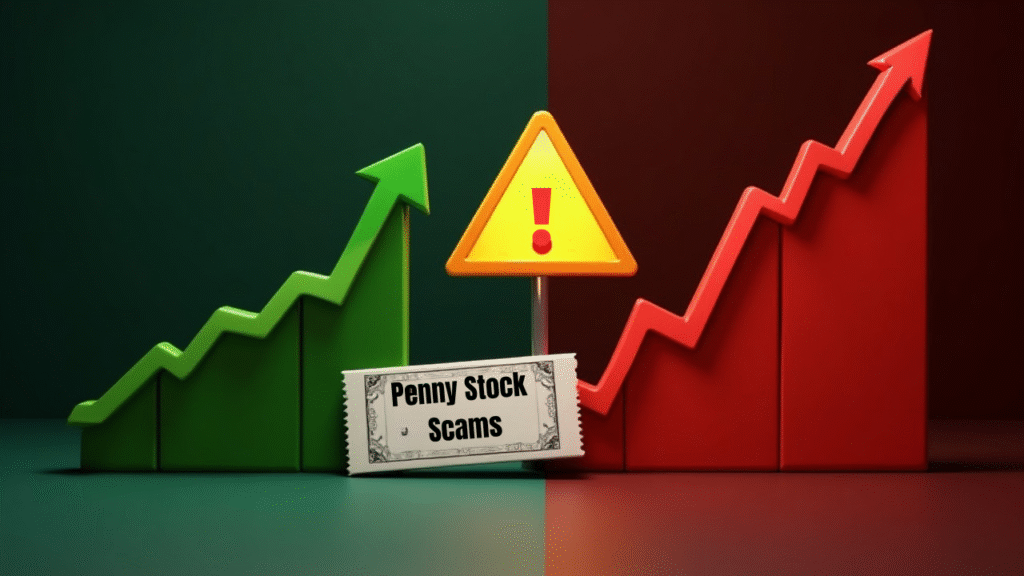If it feels too good to be true, it probably is.
That rule of life applies everywhere. But in the world of penny stocks, it’s a survival law.
The reason? Penny stocks live in the shadows, low prices, low regulation, and high emotion. And where there’s emotion, there’s often manipulation.
Let’s break it down.
The Anatomy of a Penny Stock Scam: Pump and Dump
Here’s the classic play:
- Someone buys a large amount of shares in a tiny company.
- They create hype. Social media posts. Emails. “Insider” tips. Sometimes even fake press releases.
- The price starts to rise as others join in.
- The scammer dumps all their shares at the top.
- The price crashes. Everyone else loses.
It’s called a pump and dump, and it’s the oldest trick in the penny stock playbook. Think of it as a financial pyramid scheme, only faster.

Real Story, Real Pain
A trader once shared how he bought into a biotech penny stock because of “breaking news” about a supposed FDA approval.
He bought at $0.90. By the afternoon, it hit $2.30. Euphoric, he told his friends. One bought in at $2.20.
By the next day, the stock had crashed to $0.40.
The news? Fabricated.
He didn’t just lose money. He lost trust in the market, and in himself.
Why It Works on Smart People
You don’t fall for scams because you’re stupid. You fall for them because you’re human.
- You want to believe.
- You want a shortcut.
- You fear missing out (FOMO).
Scammers know this. They prey on hope, urgency, and greed. The same emotional fuel that builds momentum, can burn you alive.
How to Protect Yourself From Penny Stock Scams
1. Question the Hype: If everyone is suddenly talking about a stock, ask: who benefits if I buy?
2. Research the Source: Don’t trust anonymous tweets, Discord servers, or shady newsletters. Look for filings, real news, real revenue.
3. Avoid the Herd: By the time you’re hearing about it, the early buyers may already be selling.
4. Use Stop-Losses: Don’t ride a crash down to zero. Set a limit where you exit, emotionally and financially.
5. Follow Your Strategy, Not the Crowd: If you don’t have a plan, someone else will use theirs and you’ll be the exit liquidity.
Also read this: What Are Penny Stocks? Why People Love Them and Why They’re Risky
A Word of Hope
Not all penny stocks are scams. But many are driven by emotion more than economics. And if you’re going to play this game, you need a code:
“Trust data over drama. Doubt hype. Respect risk.”
Scammers don’t wear masks. They wear confidence. They know you want a win. They know you want a miracle.
Don’t give them the satisfaction.

FAQs
What is a pump and dump scam?
A pump and dump scam is when scammers artificially inflate the price of a penny stock through misleading hype and then sell their shares at the peak, leaving others with heavy losses.
How can I avoid penny stock scams?
To avoid scams, verify all information through trusted financial sites, avoid reacting to hype, research company fundamentals, and never invest based solely on anonymous tips or social media posts.
Are all penny stocks scams?
No, not all penny stocks are scams. However, because of limited regulation and transparency, the risk of fraud is much higher compared to blue chip stocks. Always do your due diligence.
Disclaimer: This content is for informational and educational purposes only and should not be considered financial or investment advice. Penny stock trading involves a high level of risk, and you should do your own research or consult with a licensed financial advisor before making any investment decisions.
